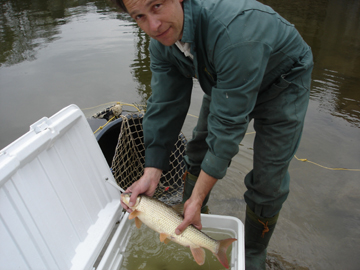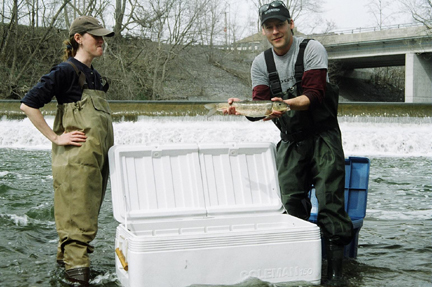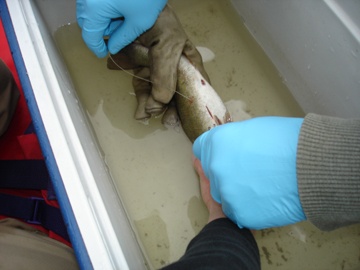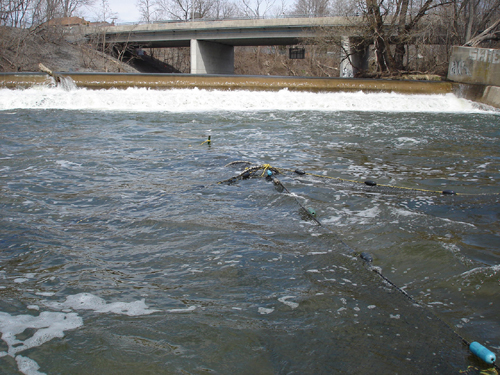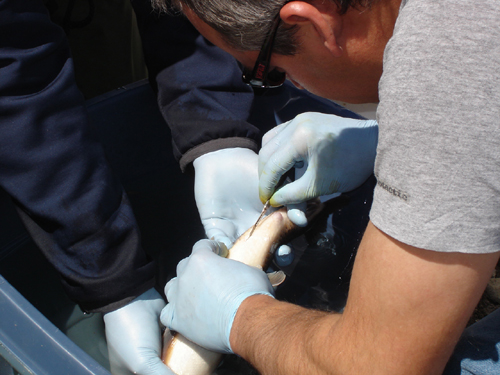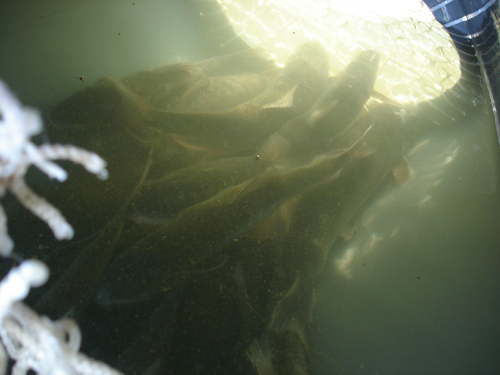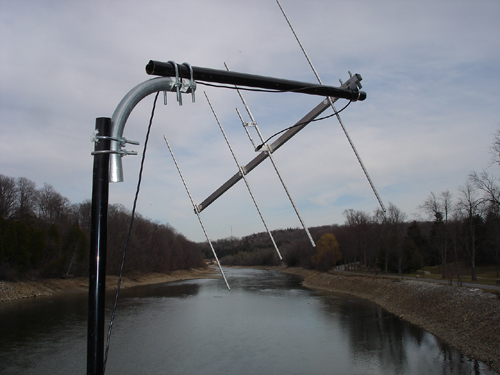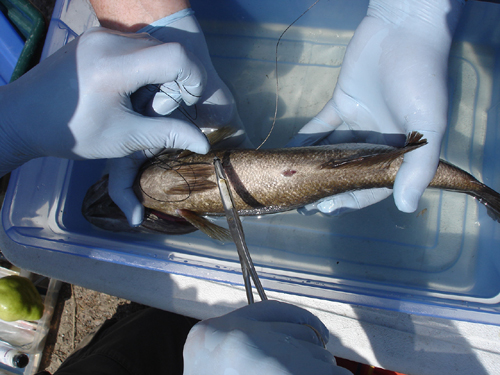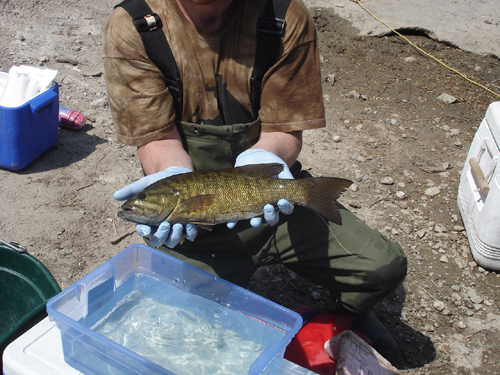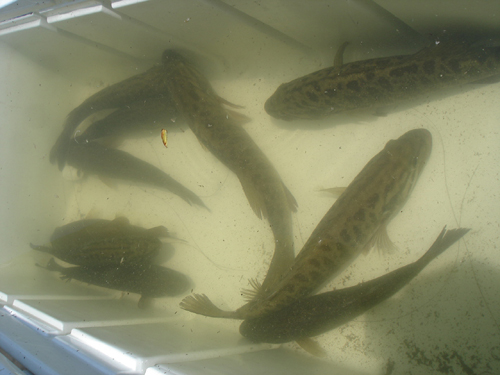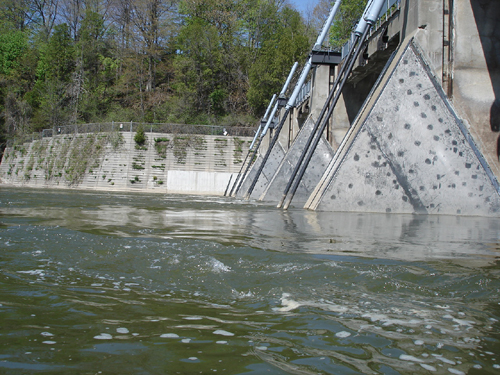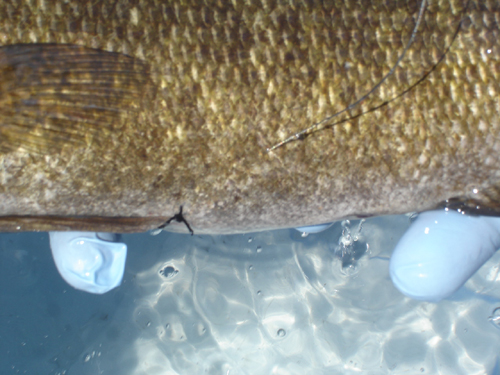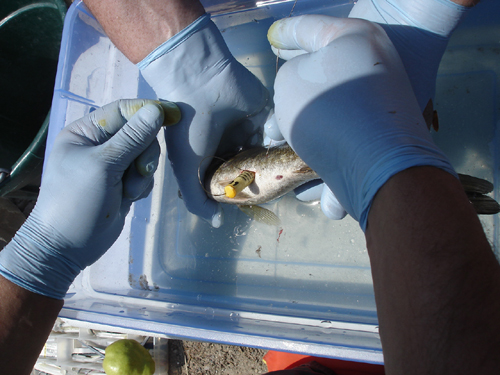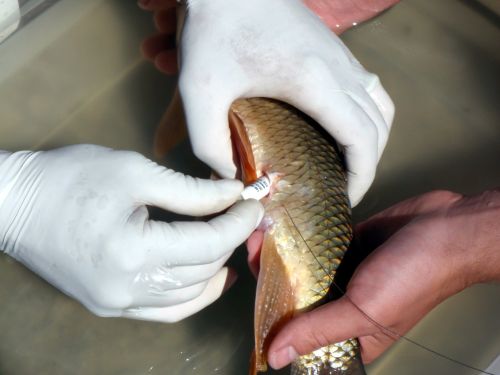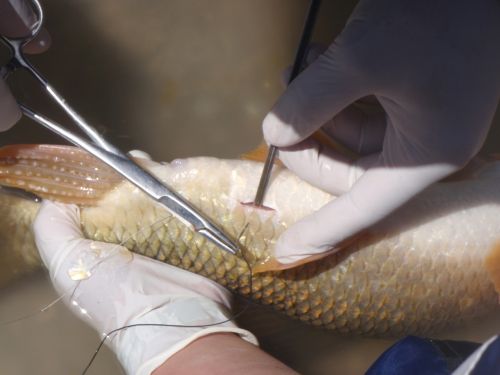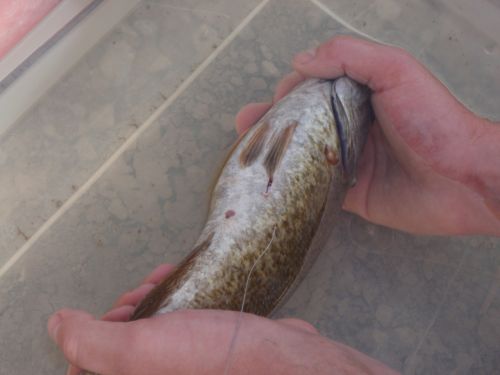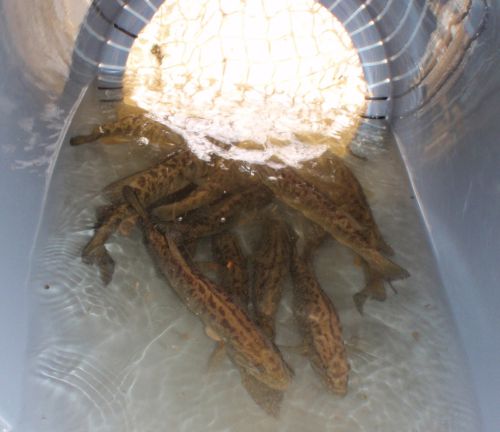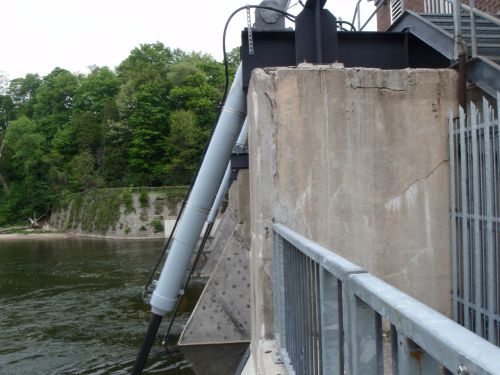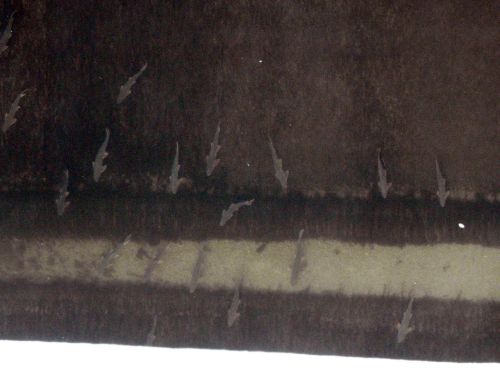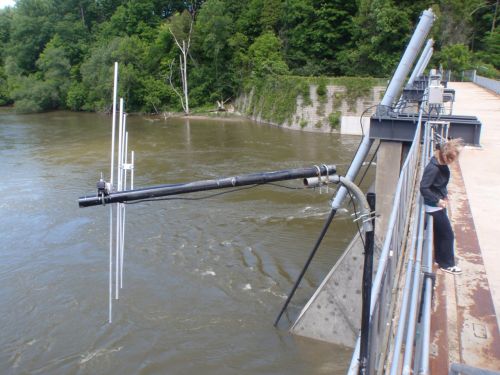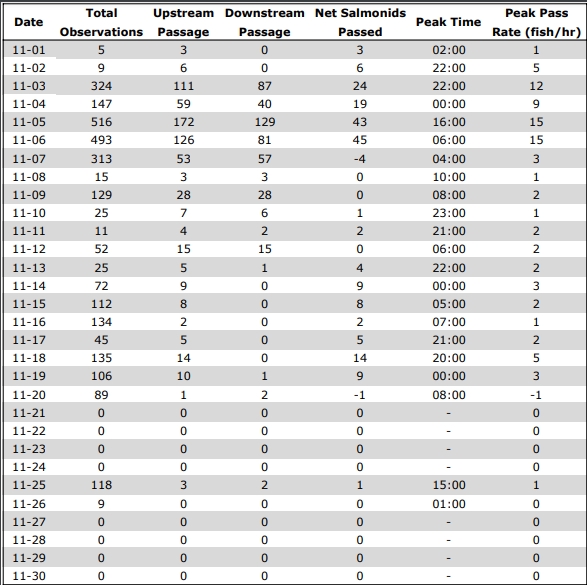The City of London and the Upper Thames River Conservation Authority contracted Biotactic Incorporated to design and conduct a study to collect baseline data related to fish movement at the Springbank dam, Thames River, Ontario, in the spring before stoplogs are installed and the dam is operated. These baseline data are to be used to address provincial and federal directives pertaining to the maintenance or enhancement of the status quo of fish movement at the Springbank dam. Radio-telemetry was used to track the movement of sixty radiotagged white suckers, shorthead redhorse and smallmouth bass at the Springbank dam from April 13 2006 to June 27 2006 (twenty fish of each species) to establish a dataset related to fish movement at the dam. All fish were collected from areas upstream from the dam and released downstream after radio-tag implantation. The vast majority of all fish passed the dam with no apparent difficulty. The two catostomid species (early migrating white suckers and mid season migrating shorthead redhorse) that were monitored, rapidly approached and passed the dam, and some individuals returned downstream past the dam several weeks after upstream migration. Late spring upstream migrating smallmouth bass approached the dam more slowly and sometimes used the structure as habitat, although the majority of smallmouth bass passed the dam with no apparent difficulty. Baseline data related to fish movement at the Sprinbank dam in 2006 is summarized as follows:
1. The Springbank dam structure is not a barrier to fish movement prior to dam closure each year and should remain this way after new gates are constructed.
2. Post-construction attraction efficiency of white sucker, shorthead redhorse and smallmouth bass should be statistically similar to pre-construction conditions. These values (reported as efficiency with 95 % confidence interval in parentheses) are:
90% (70% – 97%) for white sucker
80% (58% - 92%) for shorthead redhorse
95% (76% - 99%) for smallmouth bass
3. Post-construction passage efficiencies of white sucker, shorthead redhorse and smallmouth bass should not be statistically different from values determined under pre-construction conditions in 2006. These values (reported as efficiency with 95 % confidence interval in parentheses) are:
94% (74% - 99%) for white sucker
94% (74% - 99%) for shorthead redhorse
89% (69% - 97%) for smallmouth bass
4. Fish movement should not be delayed to the point where successful migration and reproduction are compromised. Most fish rapidly approached and swam upstream through the dam structure in 2006. The amount of time required for dam passage should not be statistically different between pre-construction and post-construction conditions. The mean time (± standard deviation) required for each species to pass the Springbank dam was:
5.2 ± 7.4 minutes for white sucker
3.5 ± 2.6 minutes for shorthead redhorse
16.7 ± 22.1 minutes for smallmouth bass
5. Post-construction attraction efficiency and passage efficiency should be monitored for a minimum of two years, and maximum 5 years after construction using radio telemetry emulating 2006 baseline data collection methodology. As with all scientific research, the study would benefit from more species, larger sample sizes and a multi-year monitoring program. Additional opportunities to monitor additional species or enhanced sample sizes may become available through partnerships with other agencies that may be interested in other fisheries objectives such as development of a Fisheries Management Plan that will greatly benefit the Thames River.
Four hydraulic gate structures were installed in 2007. The City of London commissioned a study to determine whether fish movement at the Springbank Dam (Thames River, Ontario) had been affected. The purpose of this work was to telemetrically assess fish movement and behaviour at the dam after construction of the new dam gates and to compare post-construction fish-movement data with pre-construction baseline data collected in 2006. Three years of post-construction data were collected.
